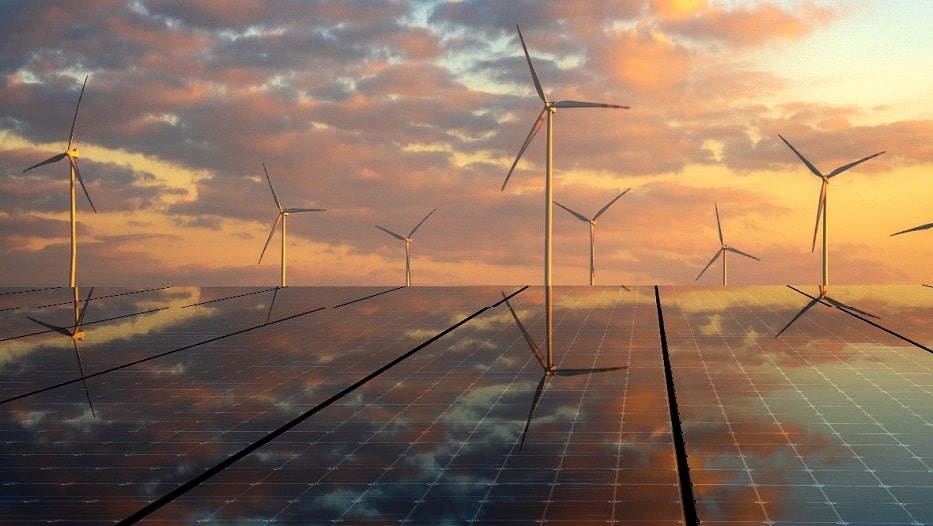Julia Maria Gomez de Avila Segade | 10/11/2022
According to data from the National Electricity Agency, ANEEL, 85% of the region’s electricity matrix is renewable in origin. Of its installed capacity of 180 GW, 58.1% is hydroelectric-based; 10.5% wind-powered; 8.6% from natural gas; 8.3% from biomass; 4.9% from oil and fossil fuels; 2.3% from centralized solar panel installations; 1.9% from coal and 1.1% from nuclear power. “This installed capacity is projected to grow by an average annual rate of 3.5% up to 2030 to meet the needs of individuals and businesses, without the planned energy matrix experiencing significant changes. The most important will be the increase in the share of natural gas, the use of which is expected to grow by 4.9% per year, with a relative reduction in petroleum derivatives as an energy source, the estimated annual growth of which should be limited to 1.6%, in favor of biofuels. The biofuel that is expected to grow the most in the period analyzed is biodiesel (5.8% per year),” the expert said.
A robust electricity system
As the Director explains, the Brazilian market has 105 distributors, of which 52 are concessionaires. This segment still has significant growth potential, due to the demands of its citizenship and industrial manufacturing, so it is attracting significant investment. “The development of the electricity sector has attracted important groups of Spanish origin, such as Redaio (Spanish Electricity Network Group), which entered the local sector in 2019 with the management of 1,500 kilometers of transmission lines, subsequently strengthening its participation in 2022 with the acquisition of new infrastructure and, as Iberdrola, through its subsidiary Neoenergía, is one of the main operators of Brazil’s electricity market, both in terms of transmission, with more than 6,000 kilometers of transmission lines, as well as distribution,” he explains.
The sheer size of this matrix means that the country will have to adapt its storage system, with the aim of introducing a large percentage of variable generation derived from wind and solar sources over the medium term. Such infrastructure will enable the effects caused by the intermittency of these sources to be mitigated, ensuring the quality of the supply and the meeting of its sustainable development objectives in rural areas, some of them in remote parts in the north of the country. “However, the availability and use of power delivery systems is just beginning. The use of residential and commercial lithium-ion batteries is very low due to their high cost, and with the storage of hydrogen in the form of compressed gas, liquid hydrogen, liquid ammonia or in the form of hydrides, new advances are expected over the medium term based on research”, he predicted, pointing out that such development will therefore require R&D projects —both public and private— which encourage technological progress, as well as a proper regulatory framework that stimulates its development
Immersed in the energy transition
In addition to the drive towards renewables underpinning the energy transition we are witnessing on a global scale, Jose Bernardez points out that change is complex, non-linear, and has a tendency to be disruptive. “Analysts suggest that there will be a long period of coexistence between the existing power sources already entrenched in the energy matrix and the more technologically-advanced power sources that one day will end up replacing them. In the case of Brazil, the transition will be based on the development of electrification, especially of renewable origin, the use of biofuels and natural gas and renewable energy storage resources,” he explains, and all this within a context of greater efficiency thanks, in part, to digitization.
This technology will also affect other sectors, such as transportation and logistics, in which batteries could play a significant role, but which in the short term continue to compete with traditional fuels and biofuels. In the long run, if commercialized, they would do so with hydrogen in the form of fuel cell powered electric vehicles. “The hydrogen economy could play an important role in the country’s energy transition; in green hydrogen projects, whereby the gas is separated from water by electrolysis powered from renewable electricity sources, Brazil is recognized as a major international player in this area,” he says.
In recent years, numerous legislative initiatives and government action plans have been implemented in the region that favor this energy transformation. Some of the most important of these are:
– The 2009 National Climate Change Policy, which established the commitment to reduce CO2 emissions expected in 2020 by about 40%
– The 2017 National Biofuels Policy, aimed at increasing biofuel production and its participation in the fuel matrix
– The creation of the so-called new gas market in 2018, which stimulates infrastructure investment and the increased use of gas
– The modernization of its electricity sector, with different initiatives to improve its legal framework and increase competition, so that the market correctly allocates costs and risks among the various agents.
A Global reference for clean electricity
Brazil has the world’s third-largest installed renewable electric power capacity and is a global benchmark for clean electricity production. This has been made possible by expanding hydroelectric and biofuel sources, and more recently solar and wind. “Photovoltaic panels were already used in the 1930s in Brazil, when in the rest of the world it was still a technology rarely seen. The current century has incentivized the production of clean energy, and thus between 2006 and 2013 wind-power grew by 829%, which has allowed this source to account for about 3% of the country’s installed capacity, with 3,700 MW,” says José Bernárdez.
Regarding electricity distribution, and despite the forecasts for demand and production, the expert states that “hydroelectric power will tend to be reduced in terms of its production capacity, in line with the Brazilian government’s desire to mitigate the impact of further water crises in the future.” The system has a focus on wind power, the second largest source of generation in the country, and on photovoltaic solar panels, set to be a major player in terms of energy policy over the next few years. “Despite accounting for only 2.3% of today’s electricity matrix In Brazil, the latter stands out as the fastest growing source, relatively speaking, in the last 5 years,” he says. Looking ahead, the promotion of innovative renewable sources focuses on newer areas, such as green hydrogen and offshore wind-power.
Taking a view: hydrogen and natural gas
“Research in hydrogen production and its industrial applications makes it an area of interest in all countries that are witnessing an energy transition. The objective is to make its use competitive in terms of cost, which would allow it to be extended to the transportation, generation and storage of energy, the production of refined fertilizers or advanced biofuels such as hydrogenated vegetable oil (HVO),” the Director explains.
Industry leaders are working on attracting investors for green hydrogen project development through public-private partnerships to take over funding and manage these projects. “The State of Ceará is one of the most active in promoting these projects, already having twelve protocols in place for collaboration with companies, among which there is also a Spanish presence, for developing the production of clean energy, followed by the State of Bahia, which in 2022 has signed an agreement with a multinational in the sector to build what could be the largest green hydrogen plant in the world,” he says.
As far as natural gas is concerned, it is expected that a production peak of close to 136 million m3/day will be reached in 2031, which could place in in a leadership position in the “new gas market”, a scenario especially important in light of the war in Ukraine and Russian sanctions. “Natural gas, which contributes 8.6% of the energy matrix, has individuals and industry as its users, in the latter case thermoelectric and petrochemical industries, as well as fertilizer companies. The national pipeline network has a total length of just over 9,400 kilometers, which transports gas produced domestically or imported through international gas pipelines, as well as in the form of LNG through regasification terminals,” he says. These figures are far from being definitive figures, as the dimension of the market is progressively expanding. “There are significant investments planned in the coming years, such as the natural gas processing center in the Rio de Janeiro Petrochemical Complex and a new 83.2 kilometer pipeline in Ceará,” he concludes.
Contributors to this article…
 Jose Bernárdez, Chief Director of the Economic and Commercial Office of the Spanish Embassy in Brazil, is a professor of economy and has been a member of the State’s Commercial Technicians and Economists since 2000. Throughout his administrative career he has held various positions of responsibility in the field of economic regulation and foreign trade and the internationalization of Spanish companies. Between 2003 and 2008 he was Economic and Commercial Director in Warsaw (Poland) and between 2011 and 2016 he performed that same job at the Spanish Embassy in Nairobi (Kenya). From 2018 and until joining the Brazilian Economic and Commercial Office in 2021, he was the regulatory director at the National Commission on Markets and Competition.
Jose Bernárdez, Chief Director of the Economic and Commercial Office of the Spanish Embassy in Brazil, is a professor of economy and has been a member of the State’s Commercial Technicians and Economists since 2000. Throughout his administrative career he has held various positions of responsibility in the field of economic regulation and foreign trade and the internationalization of Spanish companies. Between 2003 and 2008 he was Economic and Commercial Director in Warsaw (Poland) and between 2011 and 2016 he performed that same job at the Spanish Embassy in Nairobi (Kenya). From 2018 and until joining the Brazilian Economic and Commercial Office in 2021, he was the regulatory director at the National Commission on Markets and Competition.
Keep reading… “Offshore wind power is defining itself as a key player in the energy transition”.





